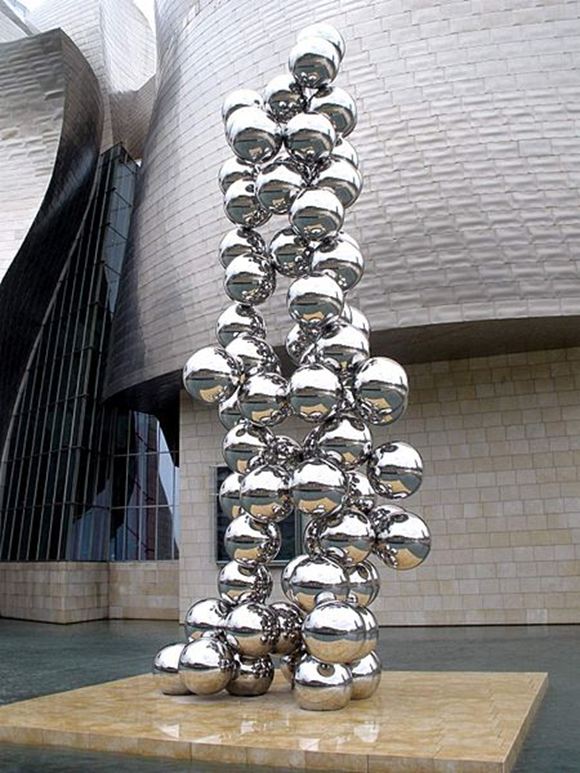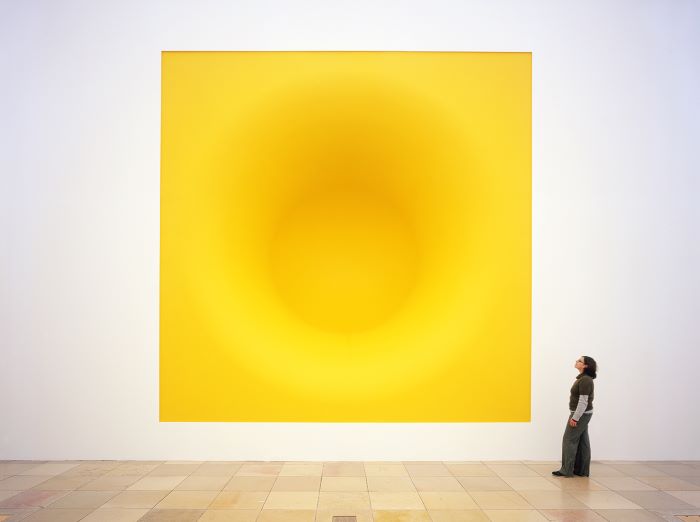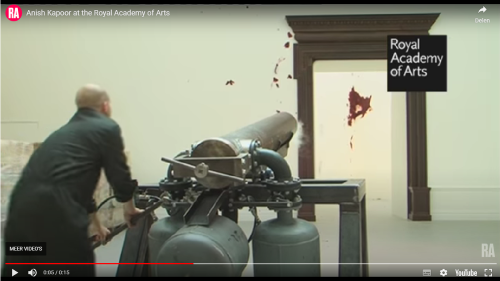Kapoor, Anish - VM - Nigel Halliday
Anish Kapoor: Tall Tree and the Eye

Anish Kapoor, Tall Tree and the Eye
Lightness of Being
by Nigel Halliday
Anish Kapoor is one of Britain’s leading talents in conceptual art. Whereas some exponents in this area seem flash and savvy, and others superficial or even vacuous, Kapoor combines thoughtfulness, creativity and a traditional respect for beauty, even though the resultant forms are non-traditional.
As Steve Turner says in his book Imagine, if Christians are going to engage constructively in the arts, our first question about a work should not be the narrow one, ‘Is it Christian?’ but the broader one, ‘Is it any good as a work of art?’ The Kapoor exhibition I discuss here (Royal Academy, London, 2009) certainly contains a number of very powerful and effective works, which we cannot help but admire, even if our understanding of reality and transcendence is very different.
Kapoor was formed amongst an interesting range of influences. He was born and brought up in India, son of a Punjabi father. His mother was from a Jewish-Iraqi family who moved to India when she was a small child. As a teenager Kapoor spent time in Israel, before moving to Britain as an art-student.
Kapoor’s work is not about his ethnicity, but it does seem to be shot through with a mindset influenced by Buddhism. The visitor is greeted in the Academy’s forecourt by Tall Tree and the Eye, a beautiful, towering arrangement of large silvery shiny balls, cleverly arranged with minimal physical contact between them, so they seem to float upwards. They sharply reflect the viewer and all that surrounds us, but with a weightlessness that suggests the ‘lightness of being’.
Inside, in the first room, When I am pregnant is a large bump in the gallery wall, which emerges so subtly that one misses it at first. It seems to suggest a Buddhist sense of being merging seamlessly into nothingness. Yellow, a gorgeous, enormous construction in the second room seems to be on a similar theme. Recessed into a wall, it toys with being and nothingness as solidity dissolves imperceptibly into space. The achievement of this imperceptibility is a sign of his genuine creativity and craftsmanship.

Anish Kapoor, Yellow
In the main room a series of wonderful distorting mirrors invite the viewer to meditate on the different ways in which we perceive the world. These are both interesting and fun, inviting you to walk towards a mirror, appearing distorted, and then suddenly see yourself as you really are.
The most eye-catching work is the home-made cannon, which every twenty minutes fires a twenty-pound projectile of red wax across the gallery, through a doorway and against the far wall. This is one of a couple of works which will actually change over the course of the exhibition: the red gunge gradually accumulates in the second room and spreads back over the floor into the first.

Anish Kapoor, Shooting into the Corner
There is no doubt, judging from the audience’s reaction, that this is seen as a piece of comic theatre, an entertainment involving suspense followed by release through laughter. But there is nothing in the work, and especially the po-faced studio assistant who loads and fires the gun like an officiant at a religious ritual, to suggest anything less than total seriousness. The assistant is clearly under instructions not to engage with or even acknowledge the presence of the audience. He steps through the crowd avoiding eye-contact and deaf to any and every question. He loads the missile and charges the gun with a solemn efficiency of one laying out the eucharist. He then stands in perfect contemplative stillness while the air pressure builds, before with a single decisive action he pulls the lever and the missile is launched.
Kapoor notes that he is interested in the random, chance-like effects that this procedure will generate. To him, one imagines, the work speaks of a postmodernist loss of confidence in rationality and human control: that there are forces in the world which are far outside our capacity to predict, that we stand in awe and wonder at their effects and in some way find meaning in them.
In an earlier generation Christians would have revolted at this embracing of chance and rejection of rational control. But, as I watched, I wondered if this work is more in tune with a biblical worldview than was probably intended. The work does not demonstrate that life is random and meaningless, because the very nature of its components – the building of the gun, the targeting, the control of the compressed air that fires the projectile – all speak clearly of rationality and control. But the uncontrolled effects of the work speak equally powerfully about the unpredictability of the effects of our actions.
What I like about Kapoor is that he is clearly trying to engage with genuine issues, to put three-dimensional form on the perceptions that many people share: that they have lost confidence in their ability to grasp reality or even to perceive themselves with confidence.
And because Kapoor is a serious artist, reflecting on the human condition, there is much that is good in his work that Christians can engage with constructively.
*******
First published in Evangelicals Now, December 2009.
Anish Kapoor, Tall Tree and the Eye, 2009, sculpture, stainless steel and carbon steel, 4.4 x 13 x 4.4 m. Bilbao Museo Guggenheim in Spain.
Anish Kapoor, Yellow, 1999, fibreglass and pigment, 6 x 6 x 3 m. (part of Kapoor’s Void series)
Anish Kapoor, Shooting into the Corner, 2008-09. Mixed media, dimensions variable. MAK, Vienna, Austrian Museum of Applied Arts/Contemporary Art. Installed at the Royal Academy of Arts, London, 2009.
Anish Kapoor (b. 1954 in Mumbai, India) is a leading contemporary British artist known for his large-scale public bio-morphic sculptural works. He has worked collaboratively with many other artists, architects and writers. Kapoor has received many distinctions and prizes over the course of his career. In 2013 he was awarded a knighthood for services to the visual arts and in 2014 an honorary doctorate degree from the University of Oxford. In 2022 he presented an exhibition of his recent architecturally scaled works at the Skulpturenpark Waldfrieden in Wuppertal, Germany.
Nigel Halliday is a British freelance art historian, lecturer and teacher. He studied History of Art at Cambridge University and the Courtauld Institute, London. He teaches the whole canon of Western art from Giotto onwards, but his main interests have been nineteenth- and twentieth-century art. He also has particular interest in Michelangelo and Rembrandt and the influence of Protestant belief on their work. He is a Research Fellow of the Kirby Laing Institute for Public Theology in Cambridge, England.
ArtWay Visual Meditation 18 June 2023


